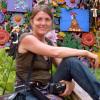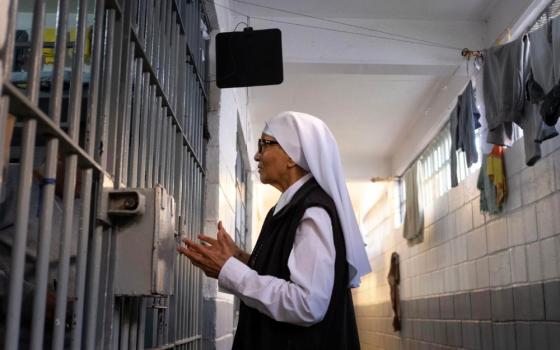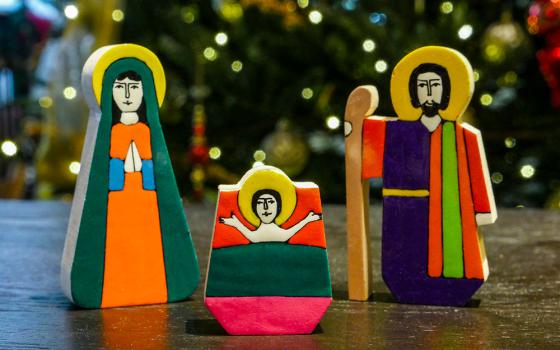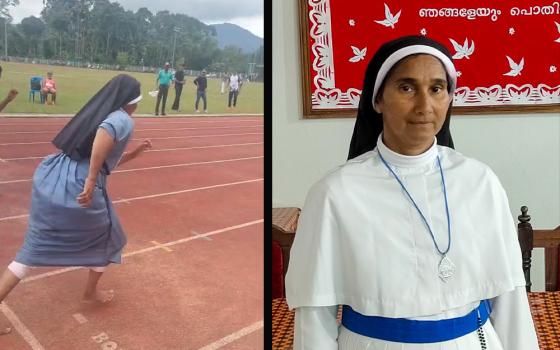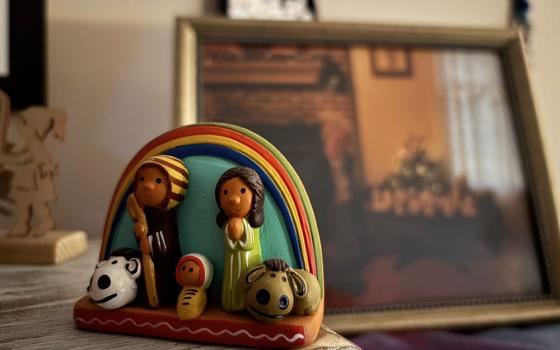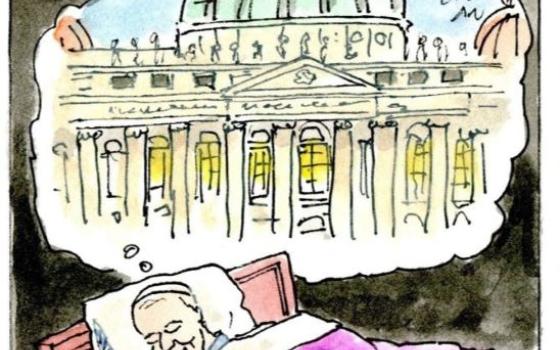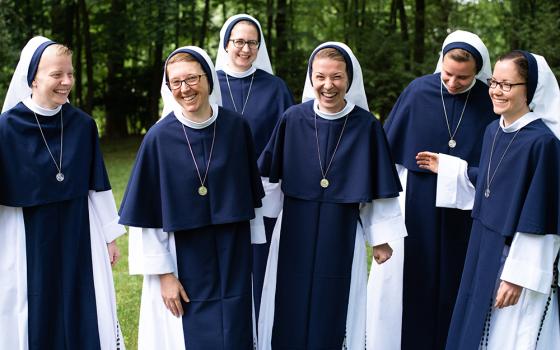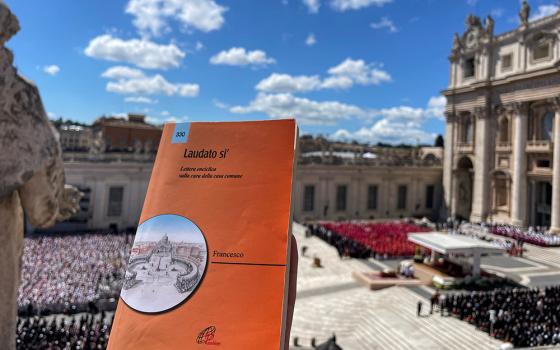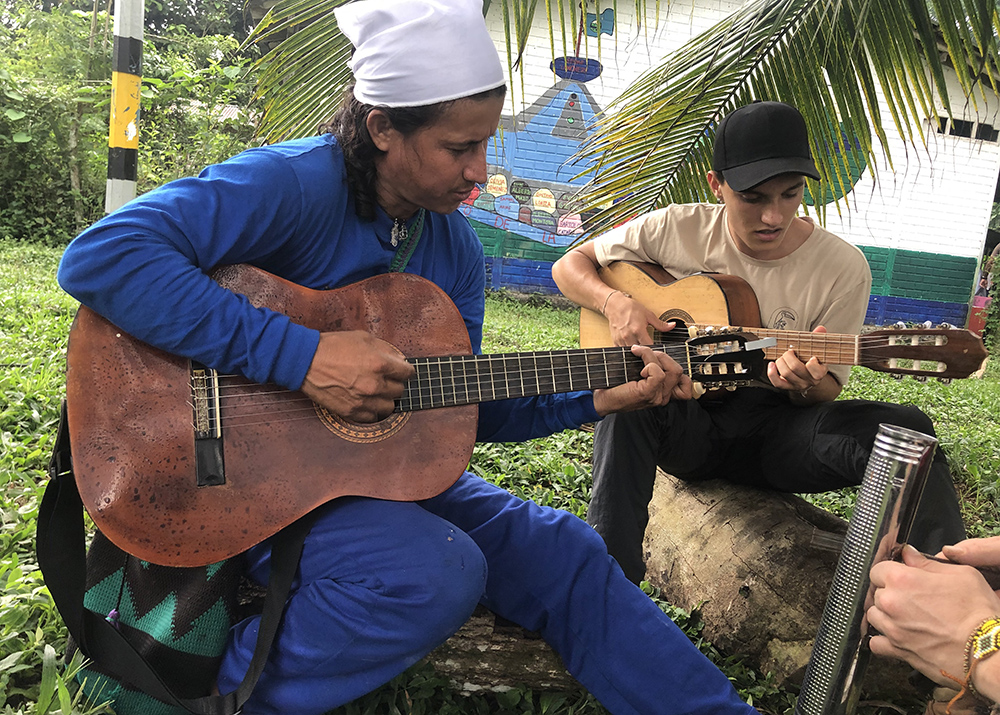
Bladimir Arteaga, or Blacho as he is fondly known, is pictured with Alén Inti Madaune, a video producer and GSR collaborator who is also a musician, on March 25, 2025, at the Peace Community of San José de Apartadó, Colombia. (Tracy L. Barnett)
"Vamos, todos campesinos/ Para ir fortaleciendo la Comunidad de Paz/ Vamos todos adelante/ Con cariño y mucho amor/ Con los tuyos y los nuestros/ y por toda la humanidad …"
It was 6:30 a.m. in the Peace Community of San José de Apartadó, Colombia, and the last rooster's crow had barely died out when the party began at top volume. It was the voice of the young curly-haired bard Bladimir Arteaga, or Blacho as he is fondly known, belting out the community hymn, "Adelante Valientes (Forward, brave ones)."
This time from a neighbor's loudspeaker, but soon the rallying cry would come from the stage: "Come, all campesinos/ To help strengthen the Peace Community/ Let us move forward together/ With tenderness and deep love/ For your people, for ours/ And for all of humanity."
The Peace Community's annual anniversary celebration would be an emotional roller coaster, beginning with a somber procession to the gravesites of Nallely Sepúlveda and Édinson David. They walked in silence, carrying banners from dozens of marches and photographs of countless loved ones.
At the gravesite where 14-year-old Édinson rests, community leader and legal representative Germán Graciano offered heartfelt words:
A young man who chose to leave the town center … where he was being offered drugs, and instead took the path of the Peace Community. He came to work with us in La Esperanza, and sadly, a killer's bullet took his life on March 19, along with Nallely's. How wonderful it would be to have him with us today, celebrating these 28 years of the community — but not like this, needing a tomb. His life gives us the strength to keep moving forward in this process.
The entire community echoed that feeling. As community council member Martha Vázquez shared:
We celebrate these 28 years with mixed emotions. Joy, but also sorrow, because we should be celebrating with Nallely, with Édinson, with all those others who were murdered. But each of them left behind an important legacy, and in their memory, we keep building community every day — in our work, in our schools, in our walks, in our defense of life and territory. We transform pain into hope, just as Eduar Lancheros taught us.
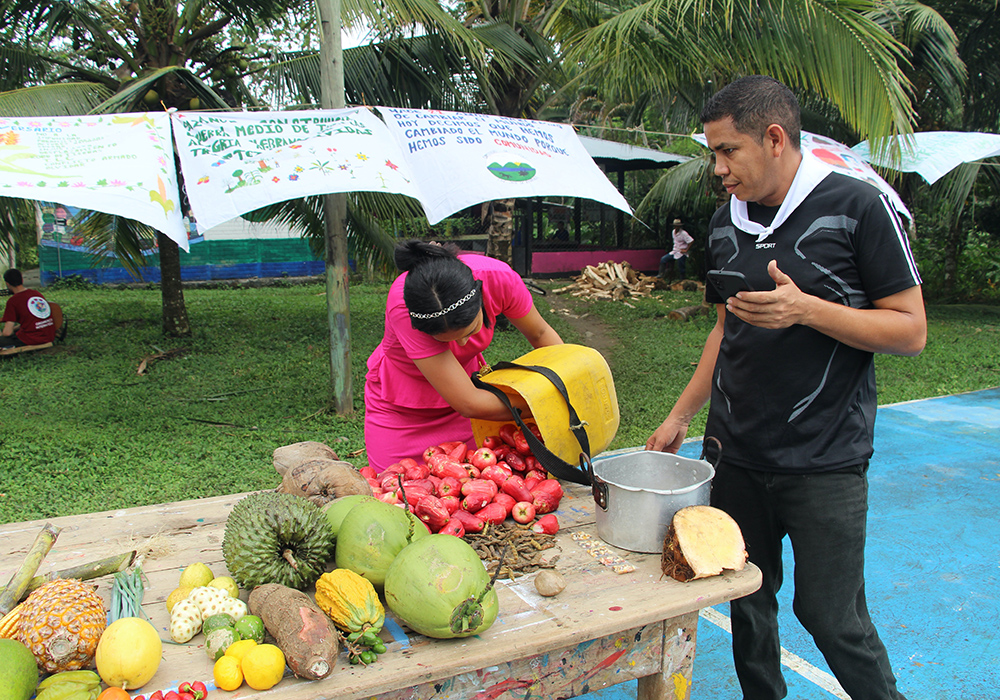
Council member Miguel Cepeda, right, is pictured with Nevaith Vargas, sharing fruits of their harvests on a common table at the cancha, the expansive ball court that doubled as a community gathering place, for the anniversary gathering. (Tracy L. Barnett)
Back home in San Josecito, then, it was time to shift the energy. First would be the feast from the community's own harvest, a testament to the agroecological abundance the community has been able to generate: rice and yucca, fried patacones of plantain, generous servings from the freshly butchered cow, sweet guanabana juice. And for dessert, sweet corn natilla sprinkled with fresh cheese.
Over on the cancha, the expansive ball court that doubled as a community gathering place, José Roviro López took the mic, playing the role of a lively emcee. Since the morning, people had been bringing a cornucopia of fruits and vegetables to share and exchange from a table piled high at the edge of the cancha. Now it was time for the competitions: the sack races, the wheelbarrow races, the water relay, the tug of war.
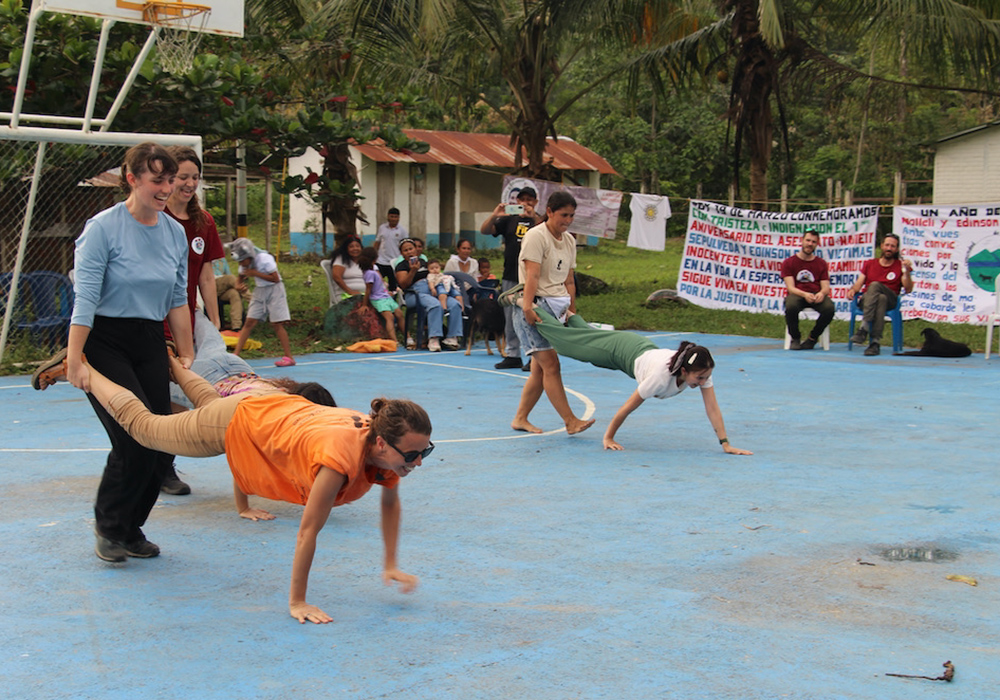
International observers competed with community members in a wheelbarrow race on the cancha during the community's anniversary gathering. (Tracy L. Barnett)
Spirits ran high as first the children competed, then the youth; the international observers against the community members; and then, to great hilarity, the members of the governing council climbed into plastic gunny sacks and made their way in giant leaps across the cancha. No one was exempt.
"To celebrate victories is to celebrate life — it is to say to death: 'We can still go on living, even in the midst of so much pain,' " observed psychologist Nidia Ortiz, who accompanied the community for five years as she conducted her doctoral research on collective mourning. Ortiz sat alongside the cancha cheering on the contestants.
As she shared with the group in an evening presentation at the celebration, her study found that what sets San José de Apartadó apart is not just its ability to endure suffering, but to transform it.
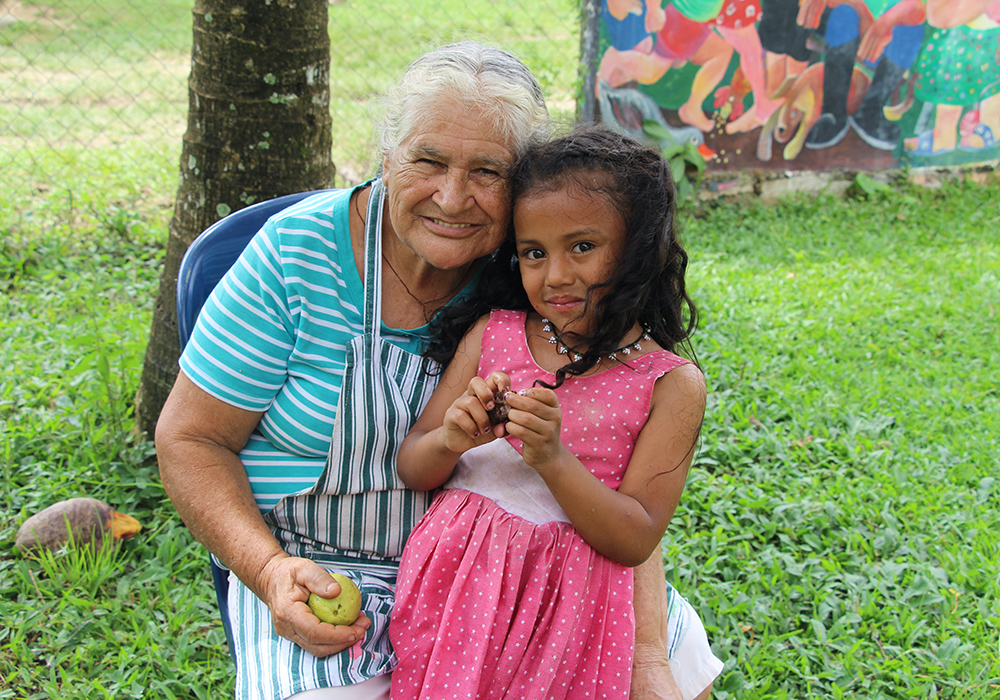
Brígida González is pictured with her granddaughter, Evelyn, at the Peace Community of San José de Apartadó, Colombia. (Tracy L. Barnett)
"The community doesn't use memory to remain stuck in pain," she told them. "Through commemorations, artistic expressions, and education, you've found ways to honor your losses while continuing to build life together."
The children of the community embody this transformative approach. Ortiz was struck by how even children who hadn't directly experienced earlier massacres could recount the details with emotional understanding. "These children recognize what happened was painful, but they don't remain anchored in that pain," she said.
Five-year-old Evelyn, granddaughter of Brígida González, demonstrated that quality time and time again. Contemplating a mural of a massacre, tracing the path of a bullet, then skipping off to join her friends on the cancha. Riding her bike in circles in front of the performers, going down, and encircled by the community's mothers almost before she hit the ground. Before the song was over, she was up and riding again.
Advertisement
